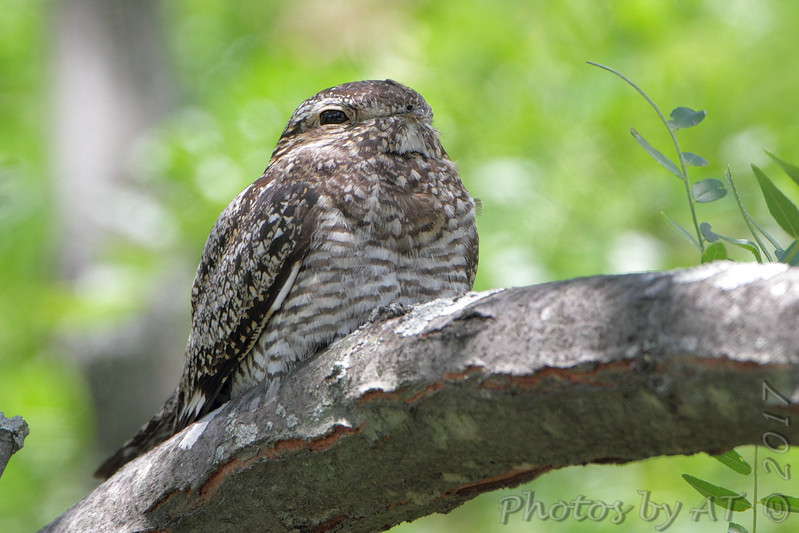Common Nighthawk, Chordeiles minor
Bill Rowe
Although a Common Nighthawk does “hawk” for insects in the sky, it isn’t actually a hawk at all. It belongs to a world-wide family that goes by the name of nightjars (after a European species) or goatsuckers (after a folk myth), characterized by a tiny bill and a large, gaping mouth. Of the three species that live in Missouri, the nighthawk is certainly the easiest to see, as it frequently cruises overhead by day or at twilight, while its cousins, the Eastern Whip-poor-will and the Chuck-will’s-widow, are strictly nocturnal, known almost entirely as voices in the woods at night. The first clue that there’s a nighthawk in the sky is often its call, a loud, nasal peent or pee-ik; that sound tells you to look up and watch it twisting and turning erratically in pursuit of its prey. Common Nighthawks inhabit nearly all of North America in the summer, nesting mostly on the ground in open areas that are grassy, sandy, or gravelly (including flat gravel roofs) and then migrating to South America for the winter. This migration can be spectacular, with dozens or hundreds of the birds streaming by, high and low.
IDENTIFICATION: Compared to other aerial birds like swallows and swifts, nighthawks are larger, with white “slashes” on the outer segment of their very long, pointed wings (see photo of a male, above) and a white throat band (buff-colored on the female). At a distance, they may be picked out by their shape, behavior, and distinctive calls.
ST. LOUIS STATUS: Still a fairly common summer bird, but with evidence of long-term declines in many parts of the country. One factor may be the overall decrease in the numbers of insects, on which nighthawks, like so many other birds, entirely depend. Right now, early September, is a good time to watch for their migratory movements, described above.
Learn more and listen to the calls of Common Nighthawks here.




